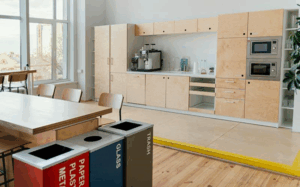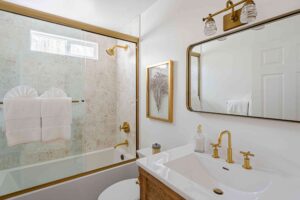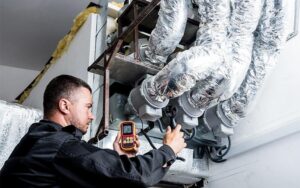How to Ensure Smart Home Integration in Landed House Designs

Integrating smart technology into a landed property is no longer a luxury; it is now a practical option for security, energy efficiency, and modern lifestyle comfort.
In the context of Singapore landed house design, smart systems must be considered early in the planning stages to avoid retrofit inefficiencies and maximise long-term value.
Due to the rising demand for intelligent homes, smart integration is now a defining factor in high-value landed house restoration projects.
Start Integration Planning During the Design Phase
Smart home features are most effective when embedded from the architectural planning stage. During the initial design of a landed house, key decisions such as power point placements, network wiring routes, and space for central control units must be finalised. Waiting until post-construction or mid-renovation to decide on modern systems often leads to limitations in infrastructure and device placement. Collaborate early with both the architect and a smart home systems consultant to ensure that wiring, sensors, and connectivity hubs are seamlessly integrated into the house blueprint.
Select a Compatible and Scalable Smart Ecosystem
Choosing the right ecosystem is a strategic decision that affects long-term compatibility and expandability. Popular systems include Google Home, Apple HomeKit, and Amazon Alexa, each with different device integrations and user interfaces. Selecting a centralised system that can control lighting, HVAC, gates, security cameras, and appliances helps reduce fragmentation in landed house renovation projects. Also, opt for systems that allow additional components to be added later without major rewiring or restructuring. Scalability ensures that the system can grow as needs change.
Ensure Reliable Network Infrastructure
A robust network is the foundation of any smart home. Landed house designs often involve multiple floors and significant square footage, which can challenge Wi-Fi coverage. A professionally installed mesh Wi-Fi system or wired Ethernet backbone is essential for reliable performance. Poor network connectivity can render modern features such as surveillance, remote locking, and voice-activated functions ineffective. Structured cabling during landed house renovation avoids exposed wires and future compatibility issues with high-bandwidth devices.
ALSO READ: Top Trends for Landed House Interior Design in Singapore
Integrate Smart Security and Surveillance Systems
Security is a key motivation for smart home integration in landed houses. Features such as remote door locking, video doorbells, CCTV systems, and motion-sensor lighting are common additions during renovation. These systems should be linked to mobile apps and cloud storage for real-time monitoring and access control. Once integrated into the primary home automation system, these features can operate in coordination. For example, turning on outdoor lights when motion is detected or sending alerts when doors are unlocked outside usual hours.
Automate Energy Management Systems
Smart integration supports energy efficiency by automating lighting, cooling, and appliance usage. Lighting systems can be zoned and scheduled to reduce unnecessary usage, while smart thermostats adapt to occupant behaviour and weather conditions. Homeowners often install solar panels and need systems that manage consumption and storage. Smart energy dashboards provide visibility over energy use, identifying wastage and adjusting usage habits. Automated blinds, temperature sensors, and occupancy detectors also contribute to better energy management.
Engage Experienced Professionals for Execution
Smart integration requires coordination among various trades: electrical, networking, carpentry, and interior design. It is not sufficient to hire general contractors with no experience in modern technology. Engage specialists who understand both the technical requirements and the nuances of landed house design. They can ensure systems comply with local regulations, are properly insulated and secured, and meet safety standards. Furthermore, they can pre-empt integration issues between third-party devices or proprietary software.
Conclusion
Smart home integration should be addressed as a primary component of Singapore landed house design, not as an afterthought. Effective implementation necessitates early planning, a stable network backbone, system interoperability, and collaboration with qualified specialists. Investing in smart infrastructure not only improves everyday functionality but also enhances the long-term property value of a newly-renovated landed house.
Visit Home Guide and let us help you align your landed house renovation goals with future-ready automation.








